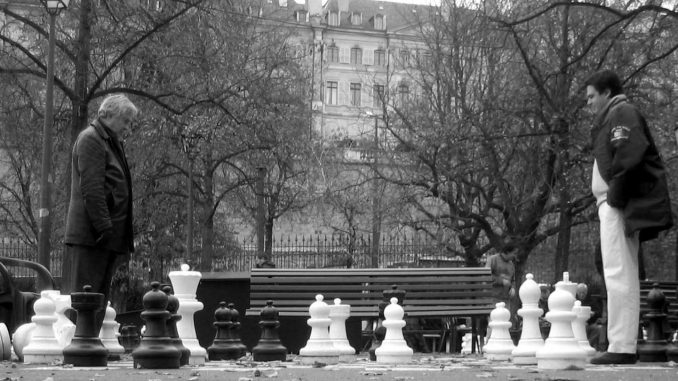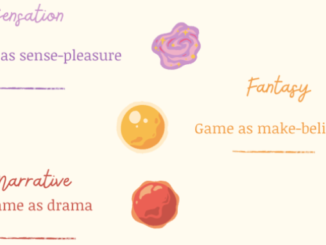
There are a number of frameworks which can be used when designing games for learning. One that was specifically designed to address the particular challenges of designing games for learning is the Design, Play, Experience (DPE) model. Design Play and Experience are further sub-divided into four layers- Storytelling, Learning, Gameplay and User Experience.

This model itself grew out of an earlier model – Mechanics, Dynamics, Aesthetics (MDA). Both of these models focus on the relationship between the game designer and the player, and the game characteristics and behaviours which emerge from that relationship.
It can be seen that the MDA model relates to the Gameplay layer of the MDE model, but that the word ‘Aesthetics’ has been replaced by ‘Affect’. This was at least partly in response to the confusion caused by the use of the word ‘Aesthetics’ which many people assumed to be to do with the appearance of the game.
In reality, the word refers to the emotional response of the player to the gameplay, and is firmly in the domain of the player. The designer cannot directly design this characteristic of the game. Neither can they directly design the Dynamics of the game. The Dynamics describe the behaviours of players when they interact with the Mechanics of the game. As such, Dynamics can be influenced by, for example, a player’s past experiences, strategic choices they make during play and higher level characteristics such as preferred way of playing (e.g. Player Type).
In using this model, the designer accepts that the only aspects of the game that can be directly designed are the Mechanics. So when we talk about ‘designing a game experience’, we are really talking about creating mechanisms, rules, toys and infrastructure with which the player can interact, and using our knowledge of the probable interaction of the player with our artifacts to predict the likely experience they will have. In effect we are designing a framework, but the experience can only be created through collaboration with our silent partner, the player.
Aesthetics is a blanket term which covers a myriad of responses that may be elicited from players. Theorists have sought to describe these in greater detail. For example, Hunicke, LeBlanc and Zubek, created the following non-exhaustive list of eight in their paper, MDA: A Formal Approach to Game Design and Game Research. This list seeks to formalise what it is about a game that is ‘fun’.
- Sensation (Game as sense-pleasure). The response to the visual and audio aspects of the game, or even taste, touch and smell if the game incorporates those.
- Fantasy (Game as make-believe). Response to the imaginary world of the game.
- Narrative (Game as drama). A story hook that drives the player to find out ‘what happens next’.
- Challenge (Game as obstacle course). The satisfaction of mastery which will drive return visits until a challenge is overcome.
- Fellowship (Game as social framework). The response to social a community aspects of the game.
- Discovery (Game as uncharted territory). The drive to explore the game world to find what it has to offer
- Expression (Game as self-discovery). Discovering and exercising one’s own creativity.
- Submission (Game as pastime). Response to the game as a pleasant activity one is willing to give oneself over to.
Hunicke, Robin; LeBlanc, Marc; Zubek, Robert, MDA: A Formal Approach to Game Design and Game Research, CiteSeerX1.1.79.4561
- James Bore – The Ransomeware Game - 13th February 2024
- Ipsodeckso – Risky Business - 23rd January 2024
- Review – Luma World Games - 15th December 2023





Be the first to comment